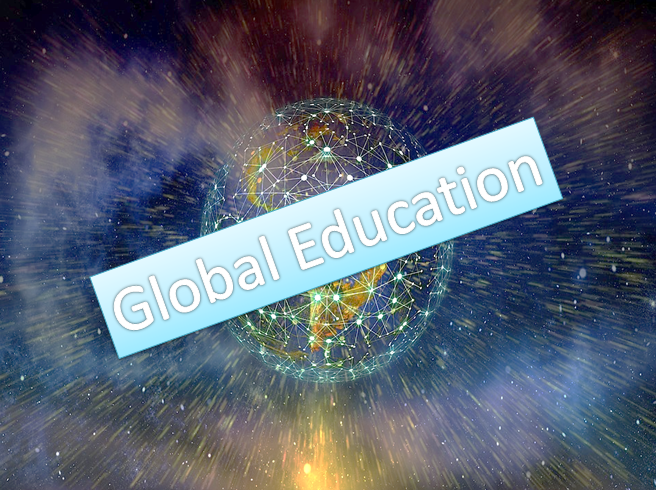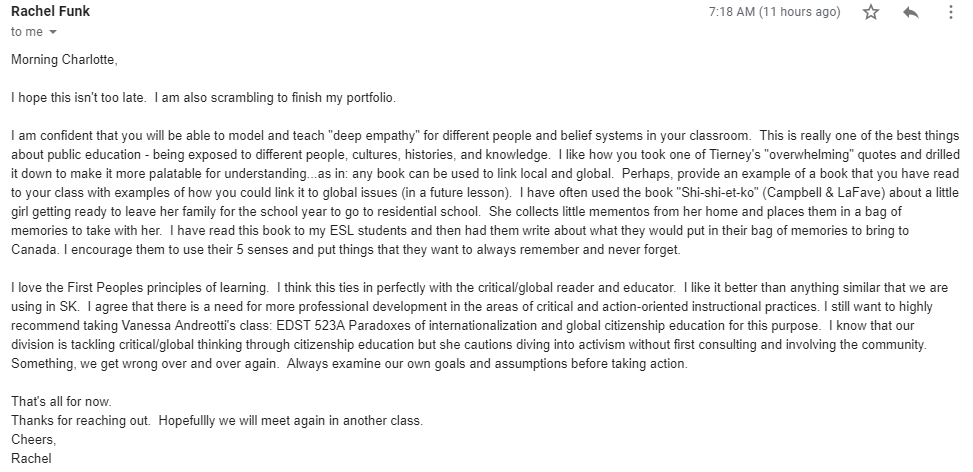The Global Reader
In an ever-changing world, with the advent of the internet, people around the world are now more connected than ever before in a relational, economical and socio-political way. We no longer have the luxury of learning about the history and current events of our present society or a few countries. There is a “necessity to prepare […] people for a changing, increasingly complex, technologically driven, and interdependent global economy” (Boggs, et. al., 2017, p. 95). As educators, we must teach our children about the importance of not only understanding but delving deeper into and showing empathy for different people, cultures, religious beliefs, circumstances and ideals.
I was always taught that reading a book to children and asking them comprehension questions about the story, characters or culture was an excellent method of teaching. However, based on Tierney’s (2019), Strategic, Writerly and the Global Readers, I now realize the depth of reading that is missing in the curriculum. For the most part, teachers provide generally only a surface understanding of the material. According to Tierney (2019), we need to bridge this gap by “linking local and global issues and adding global perspectives to traditional and multicultural texts, teachers can offer students more opportunities to envision ‘alternative ways of thinking and living’ and to challenge global issues” (p. 1). At first this quote overwhelmed me but by reading the rest of the article, I realized that this task can be accomplished by using any book as long as meaning is made that includes the readers, their worlds and other readers (Tierney, 2019).
Global reading involves students critically analyzing their work from multiple perspectives and readings. Therefore, teachers must educate their students to not just accept one point of view but to conduct further research and to consider varying points of view before formulating a conclusion. Students are invited to engage with their reading and to deeply contemplate socio-political activities in regards to themselves and their personalities. The hope is that students will learn how to delve deeply into a variety of topics, formulate educated opinions and move from being a “connoisseur to [… an] activist” (Tierney, 2019, p. 4).
In my class, I use the following guidelines to help me teach through a global lens. I use the First Peoples Principles of Learning. For example, the following three principles are closely tied to each other: “learning ultimately supports the well-being of the self, the family, the community, the land, the spirits, and the ancestors,” “learning is holistic, reflexive, reflective, experiential, and relational (focused on connectedness, on reciprocal relationships, and a sense of place)” and “learning requires exploration of one’s identity” (FNESC, 2015). When reading with students, I try to incorporate as many of these aspects into my teaching through reflective writing. I believe this is important because it enables students to connect the literature with their own lives. I also focus on the fact that “learning involves generational roles and responsibilities” because it is “embedded in memory, history, and story” (FNESC, 2015). I involve parents, grandparents and other family members into my classroom so that students gain multiple perspectives and obtain an enriched knowledge. My purpose for involving the community is because if we believe that students must take action based on their learning, they must be provided with as much information as possible, especially in regards to respecting generational roles so that they can be open to learning about historical events.
Currently, even though this is not a novel topic, not many teachers are implementing this into their curriculum as it is not taught in many educational programs and most teachers are not provided with the opportunities to learn through professional development. In fact, I went onto the University of British Columbia’s (UBC) website, to look for additional information on global education in regards to critical thinking and activism but was unable to find much. Most of the information presented online was in relation to global economy. While I am using Adrienne Gear’s Reading Power and Writing Power to teach skills such as questioning, visualizing, inferring, connecting and transforming, and integrating additional resources, such as the First Peoples Principles of Learning, I do not feel that I am doing my students justice in regards to global education. I am curious about where I can find further information about this topic and if there is anything more that I can do to help my students prepare to engage with meaningful questions in the world that they will meet as they grow older.
I have always been passionate about teaching students from a global perspective because it opens up their minds and gives them the tools to think critically. What I had not taken into consideration prior to reading this article, is the concept of activism. I would love to teach my pupils how to deeply analyze their learning and engage in activist work so that they are equipped to face the challenges of their generation and future generations.
Additional Resources
Boggs, G. R., Elsner, P. A., & Irwin, J. T. (2017). Global postsecondary education. New Directions for Community Colleges, 2017(177), 95-103. doi:10.1002/cc.20245
First Peoples Principles of Learning. (2015). Retrieved from http://www.fnesc.ca/wp/wp-content/uploads/2015/09/PUB-LFP-POSTER-Principles-of-Learning-First-Peoples-poster-11×17.pdf
Responses



